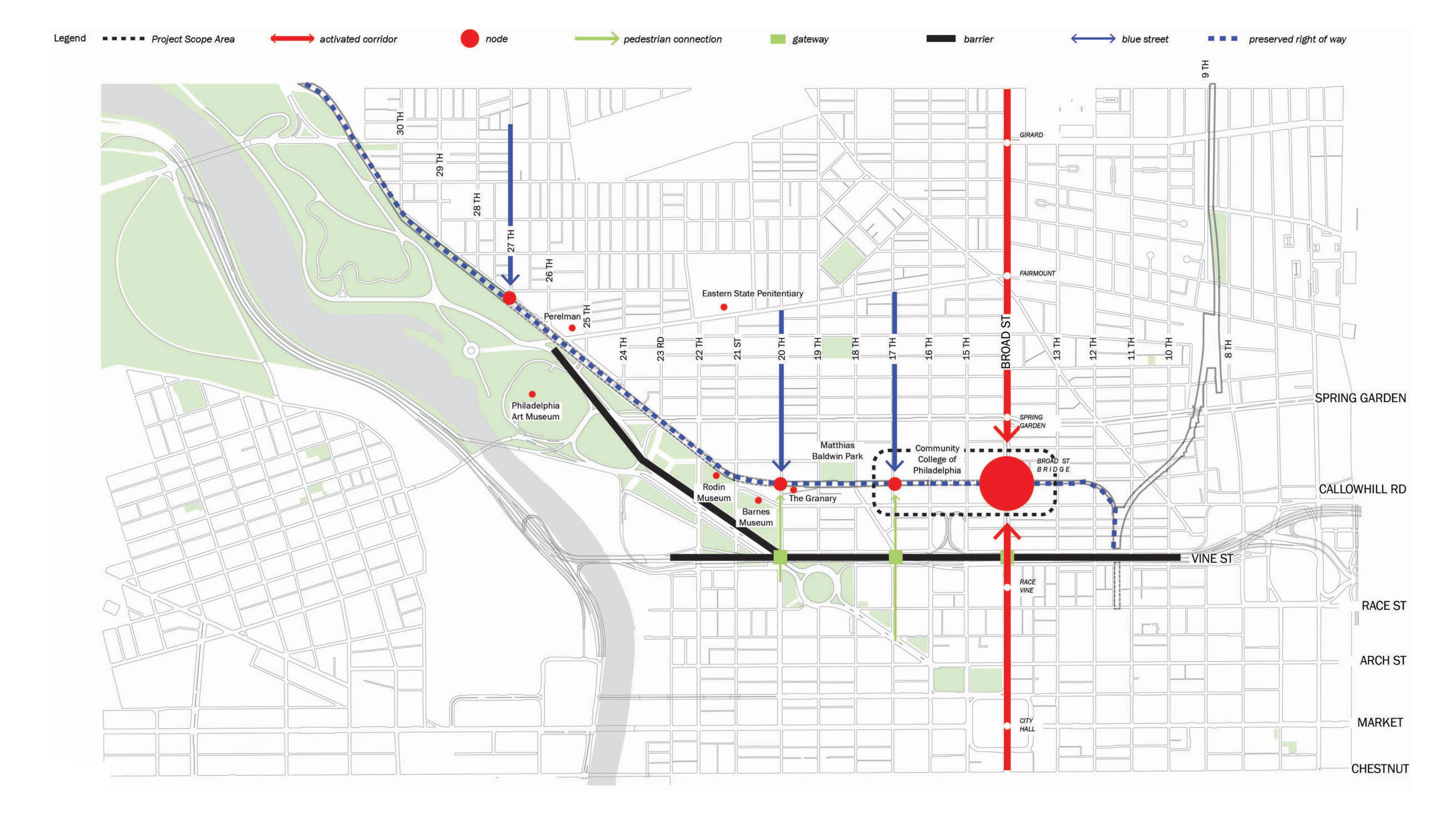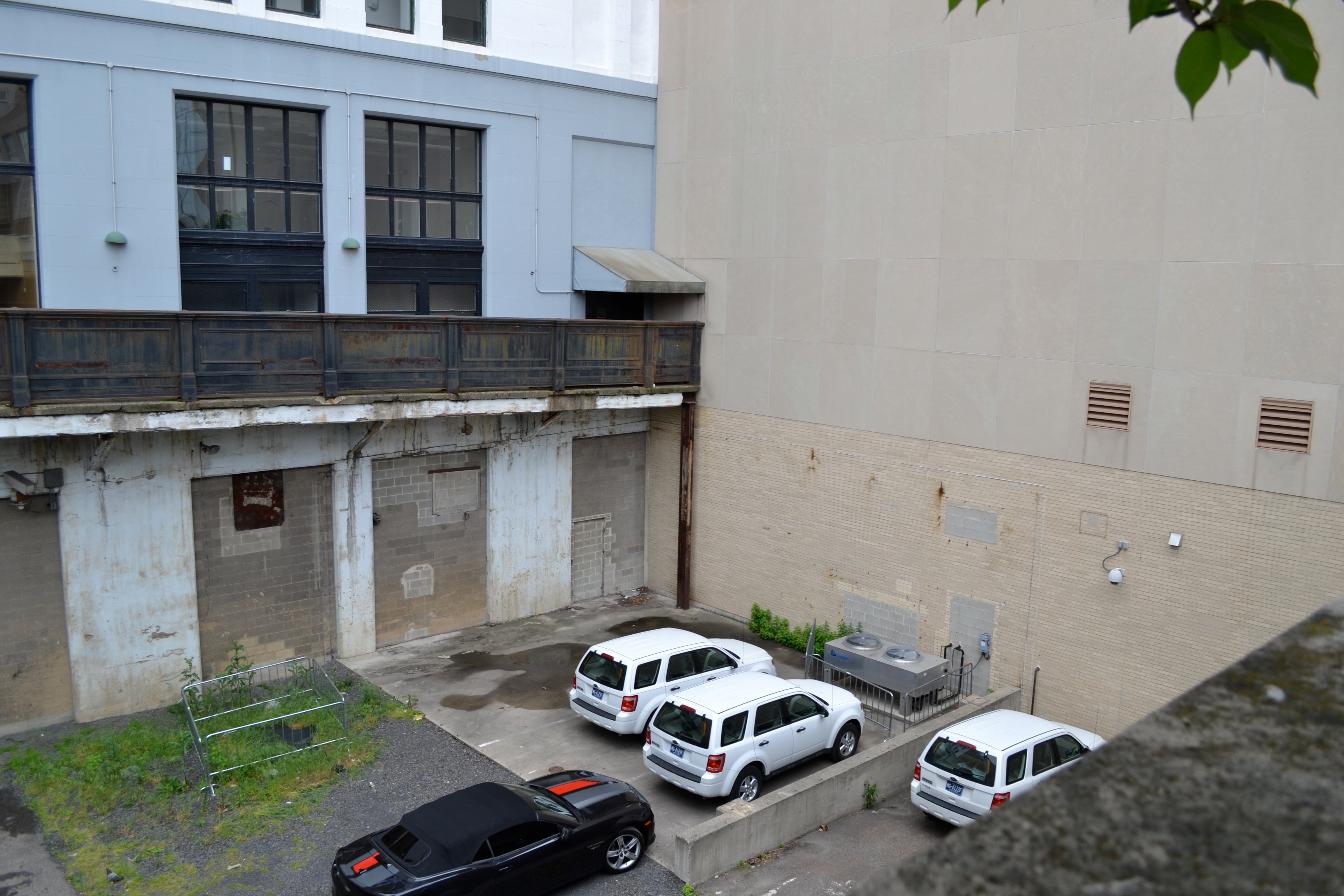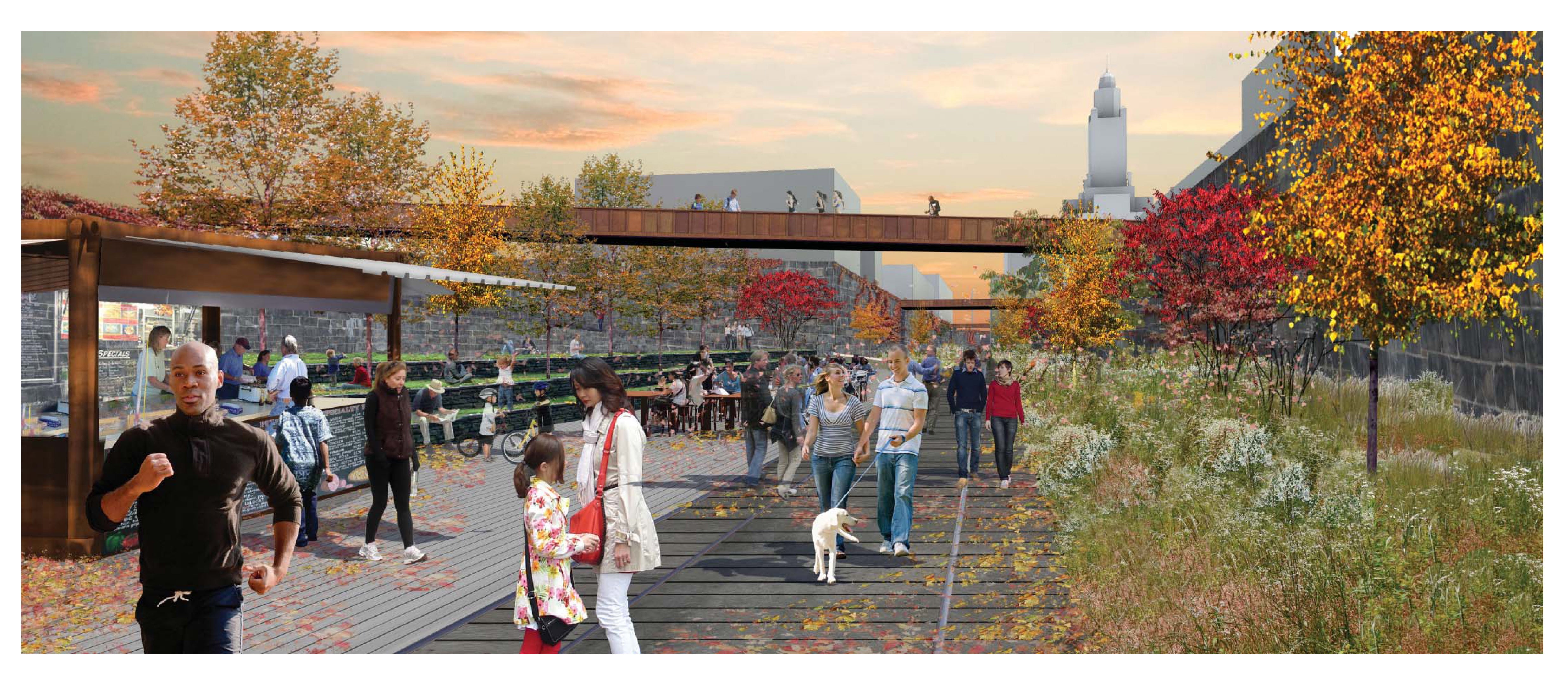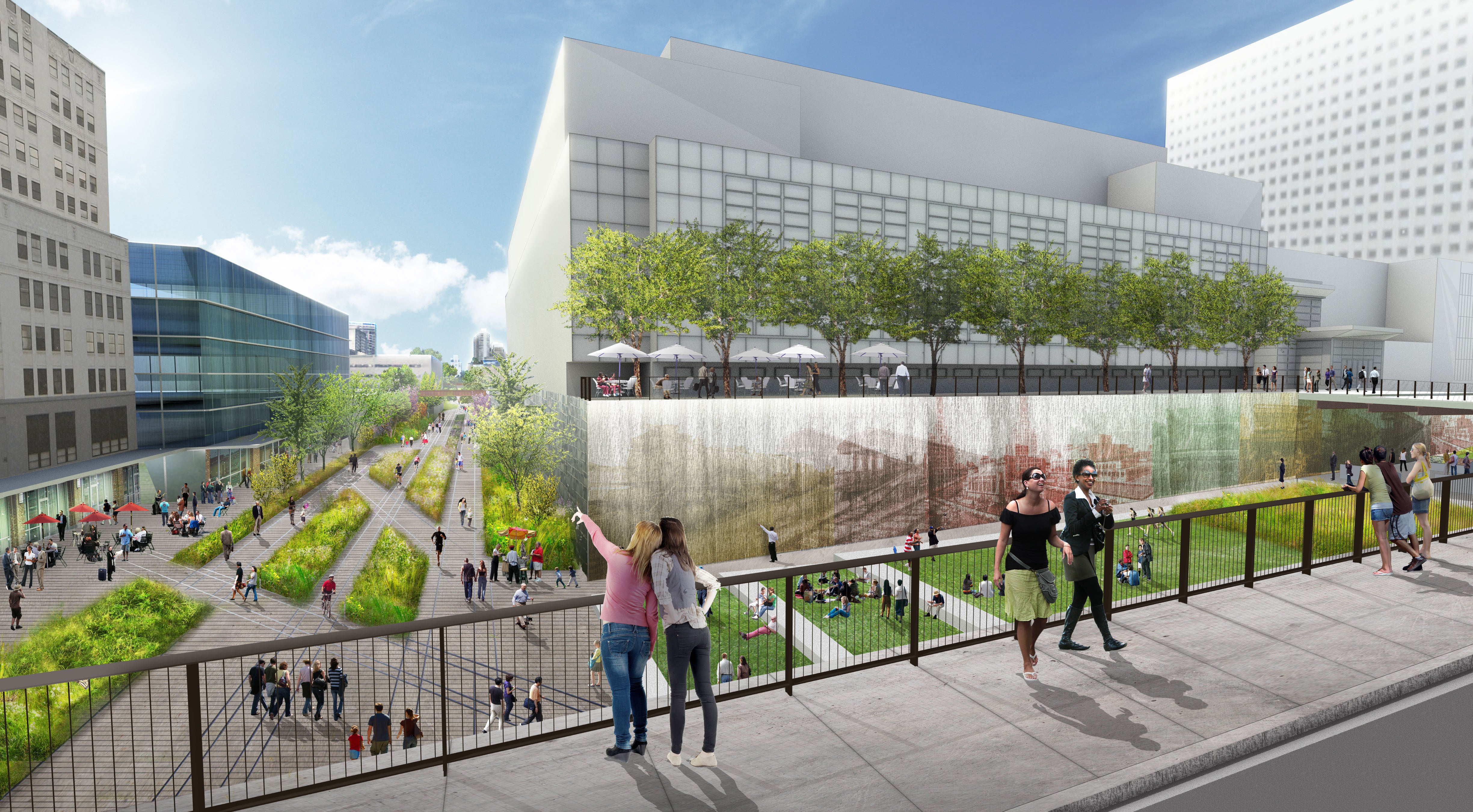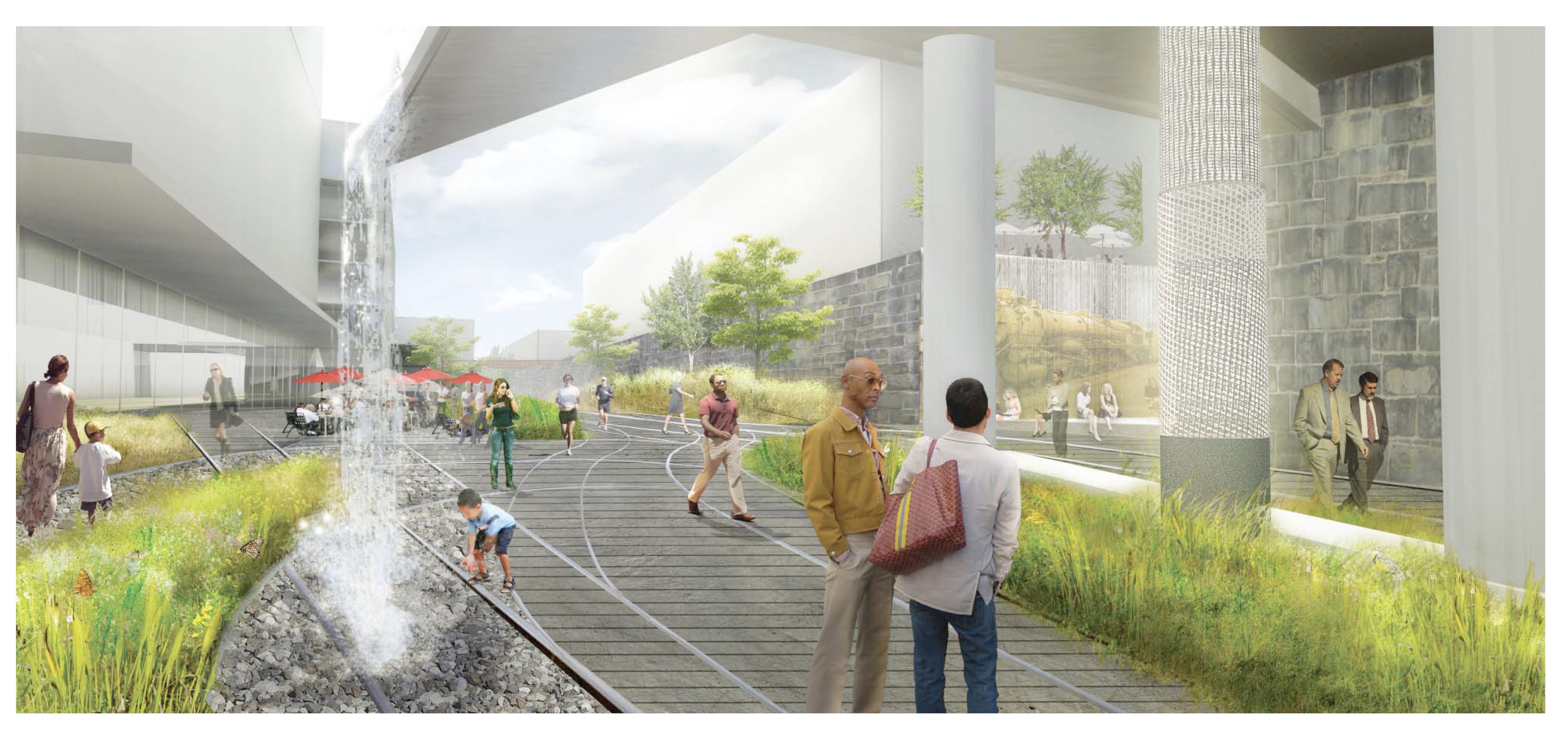Planning Commission will consider both BRT and park options in City Branch
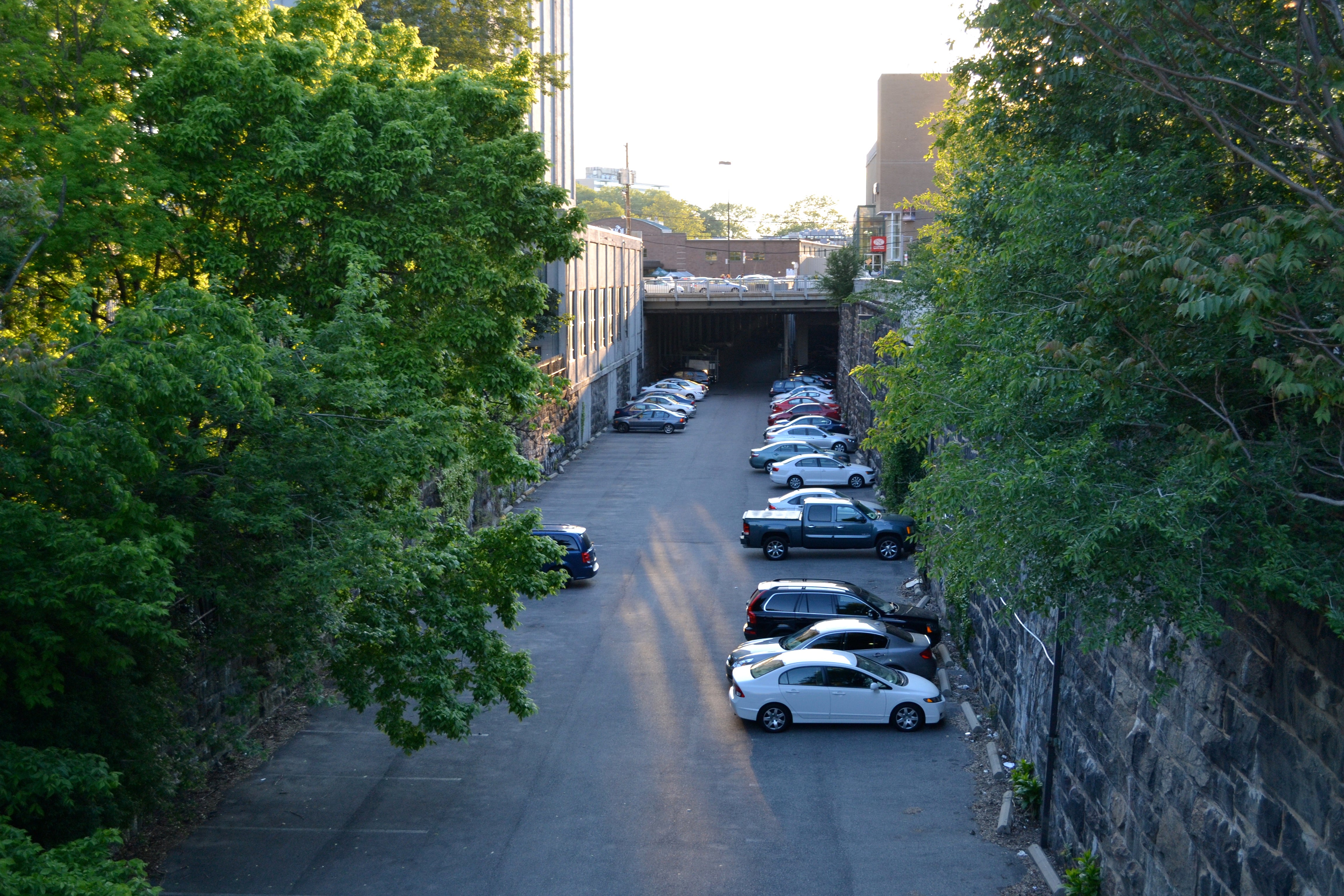
Next week, the Philadelphia City Planning Commission (PCPC) will release the final version of its Central District Plan, and when it does, the plan will include something that the draft version made no mention of – a vision for turning the City Branch into a linear park and recreation space. That does not mean, though, that SEPTA or the Planning Commission are any less determined to look at a new transit use for the retired rail infrastructure.
The City Branch, or “the cut” as it’s colloquially known, is the below-grade corridor stretching from Broad Street to 27th Street where freight tracks used to run. A large portion of the swath runs parallel to Callowhill Street and is open to the sky above it.
Until now, the Planning Commission’s Central District Plan has only identified one goal for the City Branch – turning it into part of the envisioned “Cultural Corridor Bus Rapid Transit (BRT) Line.” This use would provide direct transportation between the Delaware River waterfront, the Parkway attractions and the Mann Music Center. Buses using this space would have their own, dedicated travel lane, thus earning their “rapid” designation. The Central District Plan draft recommends conducting a feasibility study to determine ridership as well as route and mode options.
But as the Planning Commission was developing the Central District draft, another group, the Friends of the Rail Park, was working on an alternative vision for the former rail cut – turning the space into a linear park and recreation trail.
Last summer, Friends of the Rail Park, through a Community Design Collaborative grant, began working with landscape architecture firm OLIN, engineering firm CVM, cost estimating firm VJ Associates and a 40-person task force, to develop its idea. While the work was underway, some Friends of the Rail Park members attended a Central District public meeting and were surprised to see mention of only a BRT corridor in the space.
“We were just kind of floored,” said Leah Murphy, a senior associate at Interface Studios and board member of the Friends of the Rail Park. “We just didn’t have any indication from anyone that that was going to be proposed … . Based on all the conversations we’d had before, it seemed like the idea of using the City Branch for public transit was a long dead idea.”
Friends of the Rail Park pushed on with their plans and published their final vision this April. By that time the Central District Plan draft had already been published and the park vision for the City Branch was not included. According to Murphy, Friends of the Rail Park urged the Planning Commission to revise the draft to include the rail park alternative but never heard back.
Then late last month, Friends of the Rail Park learned the review and comment period for the Central District draft was closing that afternoon. The group organized an email campaign asking supporters to email the Planning Commission directly and encourage it to include the park vision. The email went out on a Thursday, and by that Friday afternoon, Laura Spina, a senior planner at PCPC and the contact for the Central District Plan, responded that the flood of messages was making it hard to do her work. The Planning Commission, she told Murphy, would include the Friends of the Rail Park vision in the plan.
“The main reason why we did not initially include [the linear park] in the draft of the plan was because the draft came out a month earlier, so we had no actual draft from the Friends,” Spina said. “It wasn’t a concerted effort to not include them in the draft. It was just timing. Ours came out first.”
Spina said prior to the email campaign, the Planning Commission had decided to include something about a linear park alternative in the draft, but that was not made clear to the Friends of the Rail Park group.
Now, according to Spina, the Planning Commission is, “adding the Friends of the Rail Park proposal with the caveat, though, that our main position is still that the primary use of the cut should be transportation, but we think there is enough room down there that it could be done in conjunction with a recreation trail or some other recreation space.”
Rapid Transit v. Recreation Trail
“When PCPC evaluated all the needs for the district, [it decided] that part of the city doesn’t necessarily need more park space, but the transit line is something that’s looking to be a real necessity,” Spina said.
Murphy countered that Friends of the Rail Park is not against using the rail cut for public transit.
“We [just] don’t think it’s likely given the backlog of needed infrastructure improvement projects,” she said.
From SEPTA’s perspective it is still too soon to say what is the best use of the City Branch.
SEPTA bought the piece of infrastructure in 1995 with plans to use it for transit. Its transit potential was studied in conjunction with the Schuylkill Valley Metro project, but the City Branch study had a few serious flaws, and SEPTA wants to take a fresh look.
Now, as the Planning Commission recommended in the Central District Plan draft, SEPTA hopes to do a feasibility study that will take another look at the cut and see if it could be used for some sort of transit system.
“I have to tell you that it is, first and foremost, a transit asset, and I think it would get close to being considered irresponsible if SEPTA were not to consider and look at that corridor for some [transit] opportunity,” said Byron Comati, SEPTA’s director of strategic planning and analysis.
Jennifer Barr, a senior long range planner at SEPTA, agreed.
“Because it’s not a legacy infrastructure, it’s not like we inherited it from Reading or Pennsylvania, since SEPTA purpose bought it for transit in 1995, which isn’t really that long ago, [we have] an obligation to at least look at various options on whether it has a transit feasibility to it because the location is just so good in Center City,” she said.
That being said, Byron has worked with the Friends of the Rail Park.
“I’ve had many hours with them on the subject,” he said. “It’s a delicate balance. I understand their interest… and there’s nothing fundamentally wrong with making a suggestion or an idea or a concept,” he said. “I haven’t been discouraging them.”
As part of the feasibility study SEPTA hopes to do, the Authority and other stakeholders will consider whether or not there is room for a shared right-of-way, where both recreation and transit could co-exist. Friends of the Rail Park has also pushed for the linear park to be created as an interim use, but Spina pointed out that fundraising for such a costly yet temporary project would be difficult and once a recreation trail is built, it would be difficult to take it away from the public.
Spina said, ideally, a feasibility study could be completed in the next two to three years. Until then neither SEPTA nor the Friends of the Rail Park has much room to move forward.
Regardless of the study’s outcome, a project in the City Branch will be costly. SEPTA estimates that just to stabilize the structure would be in the $8 million to $10 million range. That would include things like a structural assessment and repairs, work to the walls and ceiling, water proofing and ventilation upgrades and repairs. It would include features necessary to meet Americans With Disabilities (ADA) compliance and the installation of stairwells, ramps and elevators. That price would also include safety features like handrails and lighting, as well as storm water management systems.
Given SEPTA’s backlog of necessary work, Byron said it would be difficult to call retrofitting the City Branch a priority project, but the asset is too unique and has too much potential for SEPTA to give up on it without taking a closer look.
“Some cities would die for what we have,” Byron said, “And it’s kind of sad that we’re not using it, but that’s an issue more associated with SEPTA’s funding crisis and infrastructure that keeps falling apart that is part of the active system.”
WHYY is your source for fact-based, in-depth journalism and information. As a nonprofit organization, we rely on financial support from readers like you. Please give today.



